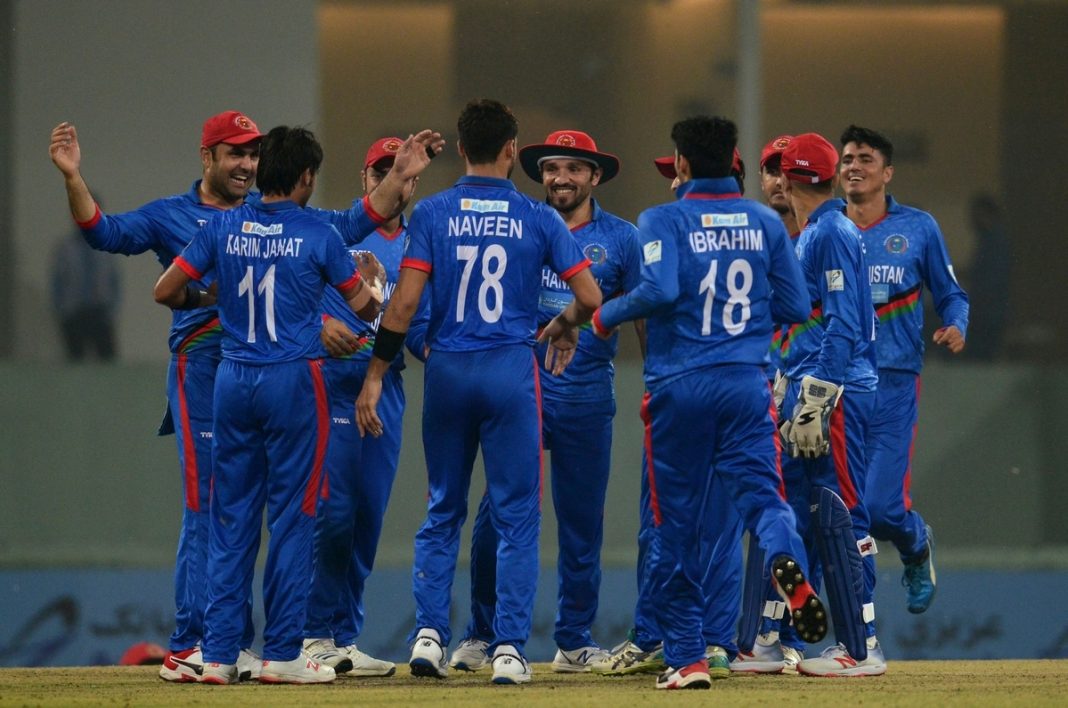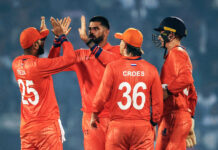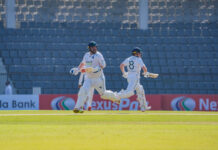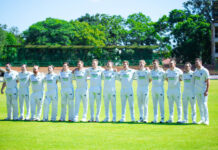When Afghanistan beat the West Indies in Lucknow on Saturday, something special occurred.
What appeared to be an innocuous T20I match in a bilateral series turned out to prove the competitiveness within 34 men’s international teams, across the Full Member and Associate world.
Afghanistan’s 41-run victory provided the last necessary link in what’s been dubbed as the International Cricket Parity Cycle. Between New Zealand beating England in February 2018, to Afghanistan’s win over the weekend, every team has been beaten by the side that precedes them in the cycle.

All matches in the parity cycle are either recognised T20Is, or matches from continental T20 World Cup qualification. The World Cup Qualifier, which pitted the best from each continent, had several teams that had tricky paths of qualifying for the tournament, dropping points along the way.
With T20 World Cup qualification on the agenda, a shift in focus to the shorter format brought wider success and parity. When given the opportunity, Associate teams given the chance have competed admirably, with several victories over Full Member counterparts. Ireland’s defeat to Canada creates the link in this particular cycle, though the Netherlands (on more than one occasion), Singapore and UAE have also beaten Full Members in the last year. The T20 World Cup Qualifier, regarded as the best tournament at its level, saw Ireland pushed for top spot, again emphasising the quality across the board. If the ICC were to remove the Qualifier from the schedule, it would deprive not only teams now lacking the chance to prove their quality, but the fans of competitive cricket with the context they so crave.
Last year, as a point of rebuttal to the decision to shrink the 2019 World Cup to a meagre ten teams, a cycle for 50-over matches was created, eventually growing to thirty of the world’s top teams. Between Full Member cricket, the World Cup Qualifier in Zimbabwe, and various World Cricket League competitions, the cycle was completed over a 21-month period. Every team had theoretically beaten everyone else.
Despite the shrinking of the 50-over World Cup, T20I cricket has opened the door for Associate members to showcase their ability. Granting all the its members T20I status from January 1 2019, the ICC has seen heroes emerge from unlikely outposts.
Cricket culture on the continent has blossomed over the last decade, with trends of migration and stories of these heroes, like Sabawoon Davizi of the Czech Republic, creating a wave of opportunity. Davizi etched his name in cricket’s record books by making 101 with the bat, before taking 4-15 against Malta in October. The son and nephew of two translators, Davizi and his family were moved to the Czech Republic by the country’s army, to protect them from the Taliban, who killed his uncle after collaborating with foreign armies. Davizi, like many others shifting to Europe, are bringing cricket to pastures greener.
Europe and their T20 World Cup qualifiers across 2018 and 2019 proved that this growth of cricket is healthy across the continent. All 18 countries registered at least one win throughout the three groups of their first phase of qualification, and could have doubled the size of the parity cycle, had the European Qualifier had two entrants in the Global tournament. Unfortunately, the only links to include the Middle-Eastern teams to the rest of the cycle are through Qatar beating Jersey in a bilateral series before the qualifier. With only one European entrant in Jersey, no other European country had the opportunity to record a win to keep a link together. Interestingly, Jersey, the team who progressed through the European Qualifier, were defeated by Germany, who were beaten by Italy in continental play, though Germany and Italy had also been beaten by Denmark.
After a fruitful 2019, the continent could be the key for the game’s attempt to grow to the next level. Not only did the Netherlands storm to a T20 World Cup Qualifier title, but the domestic scene in Europe was given a jumpstart by (now-former) German international player Daniel Weston, who launched the European Cricket League.
One cannot talk about the progress of European cricket without Weston and the ECL. Aimed to build the game by intertwining domestic structures across the continent, it has given the game and its players exposure, more context and simply more to play for. Weston, an Australian living in Munich, is also the mastermind of the growth in German cricket, with the European Cricket Network streaming matches across the country. The exposure of local matches led to a boom of teams in the country, with the smattering of interest shifting to a slew. Nearly 1.3 million people follow German Cricket TV, a project that started with 17 GoPros and a drive to grow the game.
The Netherlands and Denmark have over a hundred years of domestic cricket, though the ECL provides a level playing field for teams from countries in their cricketing infancy to compete. It is this opportunity that will see competition grow among teams from places Romania, Russia, France, Italy and Spain. On top of this, the expansion of the tournament to other parts of Europe will inspire a new generation to take up the sport.
So how does this relate to the parity cycle? Not long ago, a cycle of 34 international teams linked together by cricket results was a farfetched idea. To see the likes of the Middle-East, and unfamiliar parts of Asia among the world’s best today, and with the boom of European cricket to follow, we could see cycles like this encompassing over half of the ICC members.
by Daniel Beswick (@DGBeswick1)
Keep up with news and events from cricket’s new world on on Facebook and Twitter pages.
Looking for audio content on the emerging game? Add the Emerging Cricket Podcast to your favourites on Apple, Spotify and Podbean.







